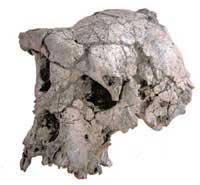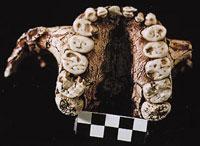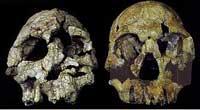According to a discovery made in Chad, the man is 7-8 million years ago
2002/07/11 Mendiburu, Joana - Elhuyar Zientziaren Komunikazioa
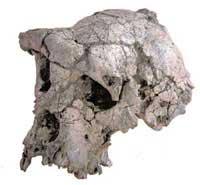
Three anthropologists from Chad and a French anthropologist have carried out the study and this same week have published the results of the work carried out in the journal Nature. According to Michel Brunet, professor at the University of Poitiers and responsible for research, the anatomy of Toumaïo makes it clear that it belongs to the human branch and is separated from gorillas and chimpanzees. Moreover, "it seems that we are very close to the division between chimpanzee and man".
One year pending review results
The discoveries were made in July last year. Ahounta Djimdoulmalbay, professor at the University of Djamena, intercepted the first piece that was almost a skull. Then came some parts of the subjaw and three brushes that are remains of at least five hominids, as well as the skeletons of many animals that would then be very useful.
As has already been mentioned, the research team consists of three anthropologists from Chad and Michel Brunet, but in this group the wind should also be included. The typical sandstorms of this region show the soil layers of the fossils, which has prevented the need to carry out explorations of great depth. Without the influence of the wind, it would not have been possible for anthropologists to encounter these incomparable traces.
But the wind does not always blow in favor, and what was initially helpful has been a source of difficulties for the next steps of research. In fact, since there is no geological layer, the usual dating procedure could not be used. A datation is usually carried out based on the study of isotopes, but in this case it was impossible. Thus, the age of fossils has been based on the bones of the rest of animals found in the area, compared to the remains of animals found at other inspection points. For this reason, for the moment, it has not been possible to give an exact date of these fossils.

In addition to standing before the remains of the oldest hominid that has been found, it has been concluded that these remains belong to a new species of hominid. The new species has been called Sahelanthropuz tchadensis (Man of the Sahel of the Chad). The nickname of Toumaï is the name that the inhabitants of the desert of Djourab give to children born before the dry season.
East Side Story against theory
Anthropologists claim that this discovery is the second piece against the East Side Story theory. The first discovery to question this theory was Abel, discovered in 1995 in Koro-Toro, an australopit of 3-3.5 million years old.
The East Side Story theory was extracted in 1980 by Yves Coppens, from the College of France. According to him, there was a barrier separating East Africa from the rest of the continent. Due to this barrier, the eastern and western primates evolved unevenly, while the Orientals became human beings and those who remained in the western jungles in gorilla or chimpanzees.
But Toumaï and Abel have found 2,500 kilometers west of this wall. After Abel's discovery, Yves Coppens pointed out that his hypothesis was still valid because in eastern Africa 3,000 Australopithecan fossils and the only Chad have been discovered. However, the day when an old fossil was discovered in West Africa between 7 and 8 million years, he said his theory could be questioned. The moment of the debate seems to have arrived.
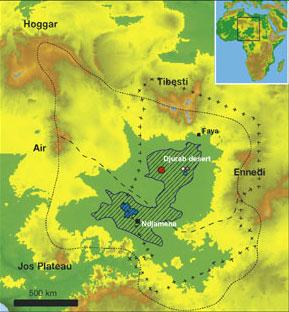

Gai honi buruzko eduki gehiago
Elhuyarrek garatutako teknologia




